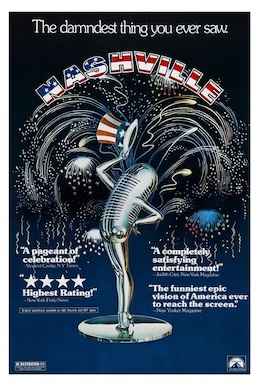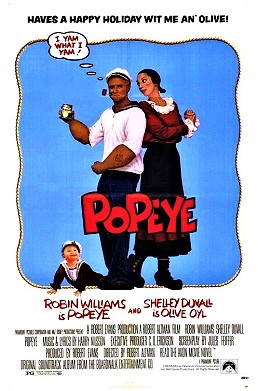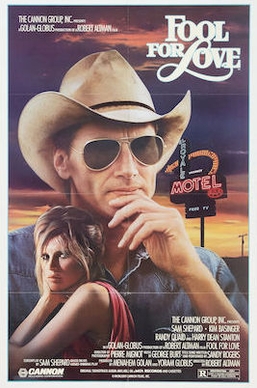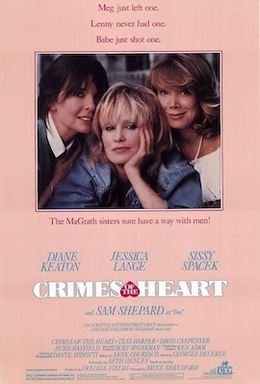
Robert Bernard Altman was an American film director, screenwriter, and producer. He was a five-time nominee of the Academy Award for Best Director and is considered an enduring figure from the New Hollywood era. His most famous directorial achievements include M*A*S*H (1970), McCabe & Mrs. Miller (1971), The Long Goodbye (1973), Nashville (1975), 3 Women (1977), The Player (1992), Short Cuts (1993), Gosford Park (2001), and The Company (2003).

Mary Elizabeth "Sissy" Spacek is an American actress. She is the recipient of numerous accolades, including an Academy Award, three Golden Globe Awards, a Screen Actors Guild Award, and nominations for four BAFTA Awards, three Primetime Emmy Awards, and a Grammy Award. Spacek was honored with a star on the Hollywood Walk of Fame in 2011.

McCabe & Mrs. Miller is a 1971 American revisionist Western film directed by Robert Altman and starring Warren Beatty and Julie Christie. The screenplay by Altman and Brian McKay is based on the 1959 novel McCabe by Edmund Naughton. Altman referred to it as an "anti-Western" film because it ignores or subverts a number of Western conventions. It was filmed in British Columbia, Canada in the fall and winter of 1970, and premiered on June 24, 1971.

Nashville is a 1975 American satirical musical comedy-drama film directed and produced by Robert Altman. The film follows various people involved in the country and gospel music industry in Nashville, Tennessee, over the five-day period leading up to a gala concert for a populist outsider running for president on the Replacement Party ticket.

Persona is a 1966 Swedish avant-garde psychological drama film written, directed, and produced by Ingmar Bergman and starring Bibi Andersson and Liv Ullmann. The story revolves around a young nurse named Alma (Andersson) and her patient, well-known stage actress Elisabet Vogler (Ullmann), who has suddenly stopped speaking. They move to a cottage, where Alma cares for Elisabet, confides in her, and begins having trouble distinguishing herself from her patient.

Short Cuts is a 1993 American comedy-drama film, directed by Robert Altman. Filmed from a screenplay by Altman and Frank Barhydt, it is inspired by nine short stories and a poem by Raymond Carver. The film has a Los Angeles setting, which is substituted for the Pacific Northwest backdrop of Carver's stories. Short Cuts traces the actions of 22 principal characters, both in parallel and at occasional loose points of connection.

Shelley Alexis Duvall is an American actress and producer widely known for her portrayal of distinctive, often eccentric characters. She is the recipient of several accolades, including a Cannes Film Festival Award and a Peabody Award and nominations for a British Academy Film Award and two Primetime Emmy Awards.

Popeye is a 1980 American musical comedy film directed by Robert Altman and produced by Paramount Pictures and Walt Disney Productions. It is based on E. C. Segar's Popeye comics character. The script was written by Jules Feiffer, and stars Robin Williams as Popeye the Sailor Man and Shelley Duvall as Olive Oyl. Its story follows Popeye's adventures as he arrives in the town of Sweethaven.

Brewster McCloud is a 1970 American black comedy film directed by Robert Altman.

Welcome to L.A. is a 1976 American drama musical romance film directed by Alan Rudolph and starring Keith Carradine and an ensemble cast. The film focuses on themes of romantic despair and shallowness in the decadent upper class during the 1970s, illustrated through a La Ronde-like circle of sexual adventures and failed affairs revolving around a womanizing songwriter, his businessman father, and their associates.

Images is a 1972 psychological horror film directed and co-written by Robert Altman and starring Susannah York, René Auberjonois and Marcel Bozzuffi. The picture follows an unstable children's author who finds herself engulfed in apparitions and hallucinations while staying at her remote vacation home.

Fool for Love is a 1985 American psychological drama film directed by Robert Altman, and starring Sam Shepard, Kim Basinger, Harry Dean Stanton, Randy Quaid, and Martha Crawford. It follows a woman awaiting the arrival of her boyfriend in a derelict motel in the Mojave Desert, where she is confronted by a previous lover who threatens to undermine her efforts. It is based on the 1983 stage play of the same name written by Shepard, who also adapted the screenplay.

That Cold Day in the Park is a 1969 psychological drama thriller film directed by Robert Altman and starring Sandy Dennis. Based on the novel of the same name by Richard Miles and adapted for the screen by Gillian Freeman, it was filmed on location in Vancouver, British Columbia, where the events occur. The supporting cast includes Michael Burns, Luana Anders, John Garfield Jr., and Michael Murphy. The picture was screened at the 1969 Cannes Film Festival outside of the main competition.

Crimes of the Heart is a 1986 American black comedy-drama film directed by Bruce Beresford from a screenplay written by Beth Henley adapted from her Pulitzer Prize-winning 1979 play of the same name. It stars Diane Keaton, Jessica Lange, Sissy Spacek, Sam Shepard, Tess Harper, and Hurd Hatfield. The film's narrative follows the Magrath sisters, Babe, Lenny and Meg, who reunite in their family home in Mississippi after Babe is arrested for shooting her husband. Each sister is forced to face the consequences of the "crimes of the heart" she has committed.

Craig Richard Nelson is an American actor in theater, film and television.
The 42nd New York Film Critics Circle Awards, 30 January 1977, honored the best filmmaking of 1976.
The 43rd New York Film Critics Circle Awards, 29 January 1978, honored the best filmmaking of 1977.

Get Low is a 2009 drama film directed by Aaron Schneider, and written by Chris Provenzano and C. Gaby Mitchell. It tells the story of a Tennessee hermit in the 1930s who throws his own funeral party while still alive. The film stars Robert Duvall, Bill Murray, Sissy Spacek and Lucas Black. Duvall was awarded the Hollywood Film Festival Award for Best Actor for his lead performance.
The 12th National Society of Film Critics Awards, given on 19 December 1977, honored the best filmmaking of 1977.

Shelley Duvall is an American actress who began her career in 1970, appearing in Robert Altman's Brewster McCloud. She went on to have roles in numerous films by Altman throughout the 1970s, including the period Western film McCabe & Mrs. Miller (1971), the crime drama Thieves Like Us (1974), the ensemble musical comedy Nashville (1975), and the Western Buffalo Bill and the Indians, or Sitting Bull's History Lesson (1976). Duvall also had a minor role in Woody Allen's Annie Hall (1977). Her performance in Altman's subsequent psychological thriller 3 Women (1977) won her the Best Actress Award at the 1977 Cannes Film Festival, a Los Angeles Film Critics Association Award, as well as a BAFTA Award nomination in the same category.




















